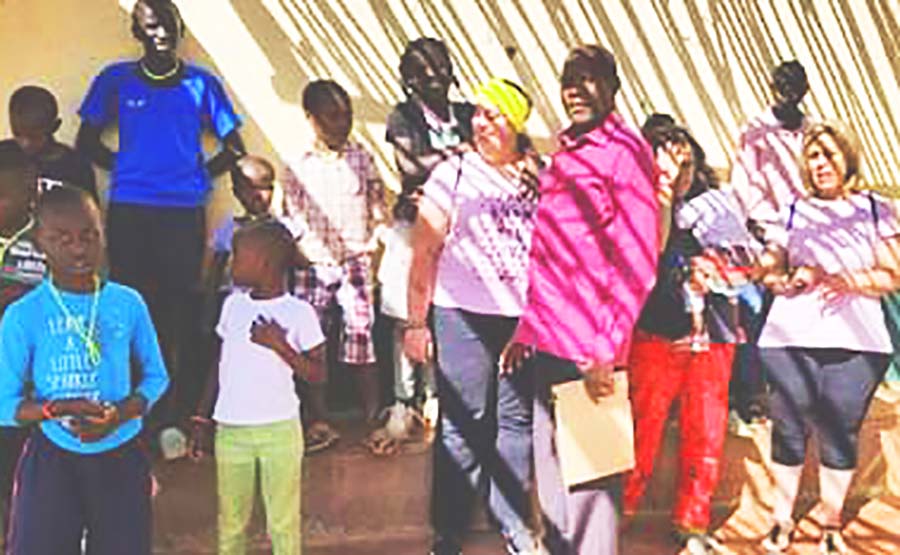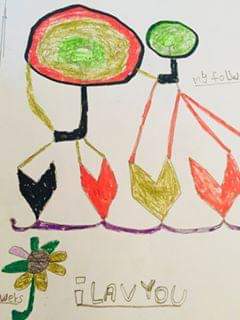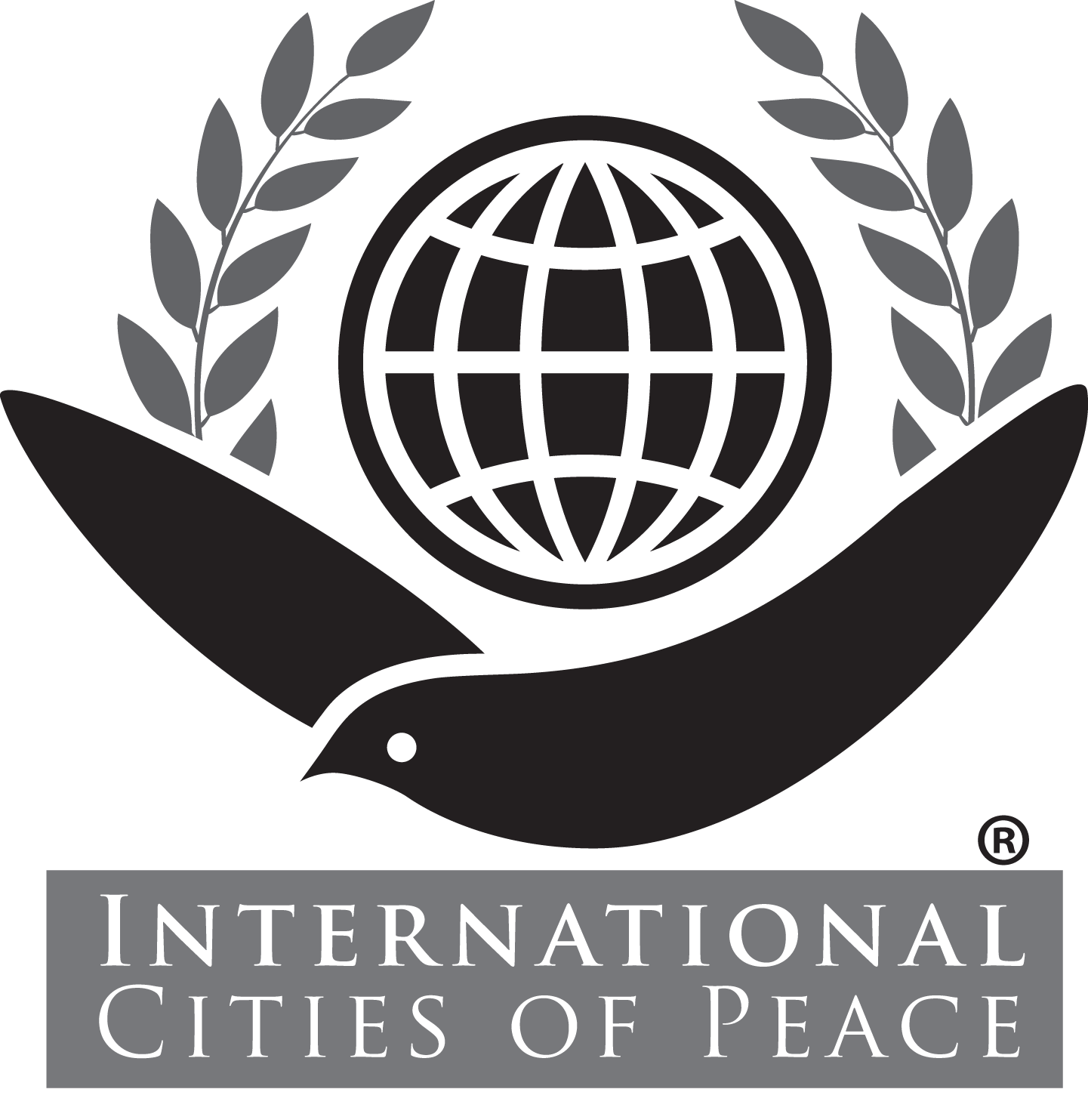Kabarnet, Kenya: International City of Peace
We welcome John Tilji Menjo who along with his fellow citizens have established Kabarnet, Kenya as an International City of Peace. The Rooting for Peace project is being developed to create peaceful exchanges between Kenyans of diverse cultures.
John is founder of the Eco-learning Cultural Center and an artist and cultural operator teaching, supporting and promoting children’s participation in culture and the arts and nurturing their natural powerful talents in Kabarnet, Kenya. He collaborated with the National Museums of Kenya to fulfill the above stated objective. He is forming this initiative to address the needs and creative requirements of a child’s development; and to teach, support and promote the creative arts, bringing diverse artistic communities of the great North Rift Valley.
Latest from John Tilji Menjo, October 10, 2023:
“While my international peace/culture, art exchange for children is thriving and growing (17 countries around the globe are participating), efforts to raise money for the land on which to build my local school/community center have resulted in several small steps toward that end, but no school yet.”“World BEYOND War Spain along with Veterans For Peace Spain and the Veterans Global Peace Network continue to support my heartfelt and globally impactful peace work, and we encourage others to join us as children around the world work for peace, thanks to my continued efforts.”
Note: Introduction page with information primarily at the time of joining International Cities of Peace. For updates, please contact the liaison.
UPDATE: August, 2020
UPDATE: March, 2020
FIRST PEACE SCHOOL IN KENYA. John Tilje and his colleagues in Kabarnet-Kenya International City of Peace have in the past two years been offering children an opportunity to share their stories and express themselves through an art project (Nursery school for tribal integration to keep war-torn children from different communities together).
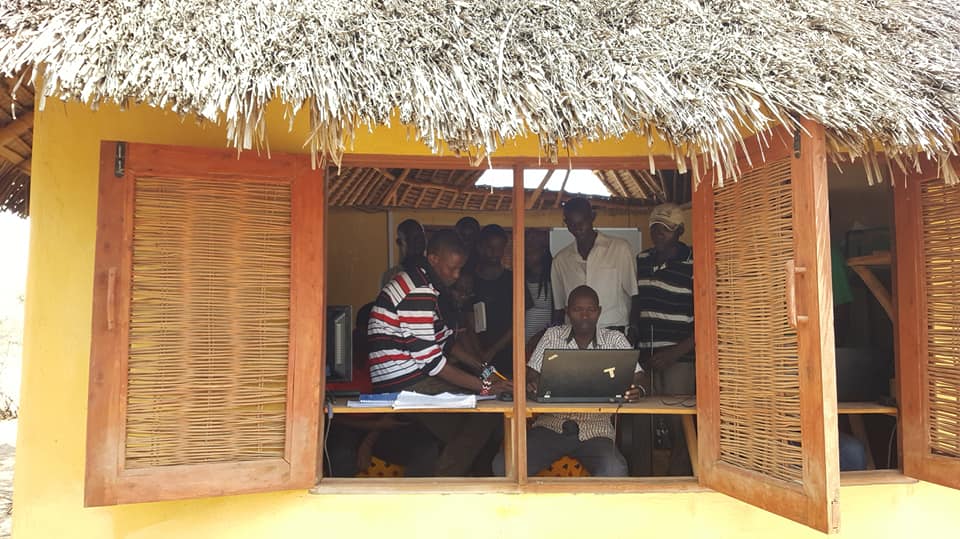
Last two weeks have seen the project grow to become the First Peace School (using art, education and culture for tribal/racial integration) in Kenya. The Ilchamus tribe has always seen the people of the North and the Rift Valley as invaders. The Ilchamus (a sub-tribe to of the Masai) are of a peaceful nature but do not usually mix with other tribes. They have their own dialect, their traditions and culture. They let alone the Pokot and the Turkana of which there are huge differences. As often happens, thanks to the project that helps their children create art for peace and biodiversity conservation, it teaches children to understand how we can live together, and know each other while taking as an added value their diversity.
We shall therefore establish, complete and manage the first school of peace within the Ilchamus village. It is a small art school painted with unifying tribal colours that will start with Art classes attended by thirty children. This can bring benefits of reducing inter-tribal conflicts, human/wildlife conflicts and conflicts over dwindling natural resources; and we shall teach peace from childhood. I think that Integration is easier if you start with Education and Culture.
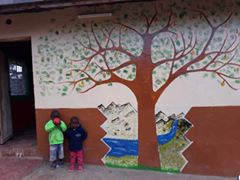
Peace Building: using cultural activities to promote peace
The initiative shall embark on a series of cultural activities to promote peace as well as fight retrogressive cultural practices that hinder the education of children.
The activities will also be used to pick cultural leaders who will be mandated to promote the great north Kenya Rift Valley region’s cultural heritage and spearhead peace initiatives in conflict-prone areas, such as Kapedo, in the region.
Rooting for Peace through Cultural Projects.
Led by John Tilji Menjo, a Kenyan Art and Culture operator, the community-based cultural organization Eco-learning Cultural Center in Kabarnet is registered in Kenya to undertake collaborative projects and exchange between diverse cultures and to contribute to local, community participation in the Arts, bringing diverse artistic communities together.
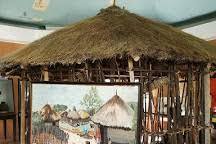
John Tilji Menjo who runs Eco-learning Cultural Center in Kabarnet, Kenya: International Cities of Peace. Featuring the Rift Valley people, their culture, its environment, indigenous knowledge and science for education and peace
VISION
Achieving social transformation within Baringo County in Kenya through peaceful cultural interaction
MISSION
To use Art and Cultural programs to foster peace and reconciliation among the varied and diverse cultural groups of Kenya.
GOAL
To bring diverse artistic communities together for peace and harmonious co-existence
The organization collaborates with other National Museums of Kenya departments to fulfill the following objectives:
- To collect and document Kenya’s tangible and intangible cultural heritage and preserve them for posterity.
- Present the ethnographic collection to the public through exhibitions and lectures for educational purposes and for public enjoyment.
- Conduct research on the relevant socio-cultural themes in Kenya and disseminate the findings to the public.
- Promote the appreciation of the rich and diverse cultures of Kenyan communities through the culture and heritage groups of Kenya.
- Enhance the application of indigenous knowledge for cultural and biodiversity conservation for development.
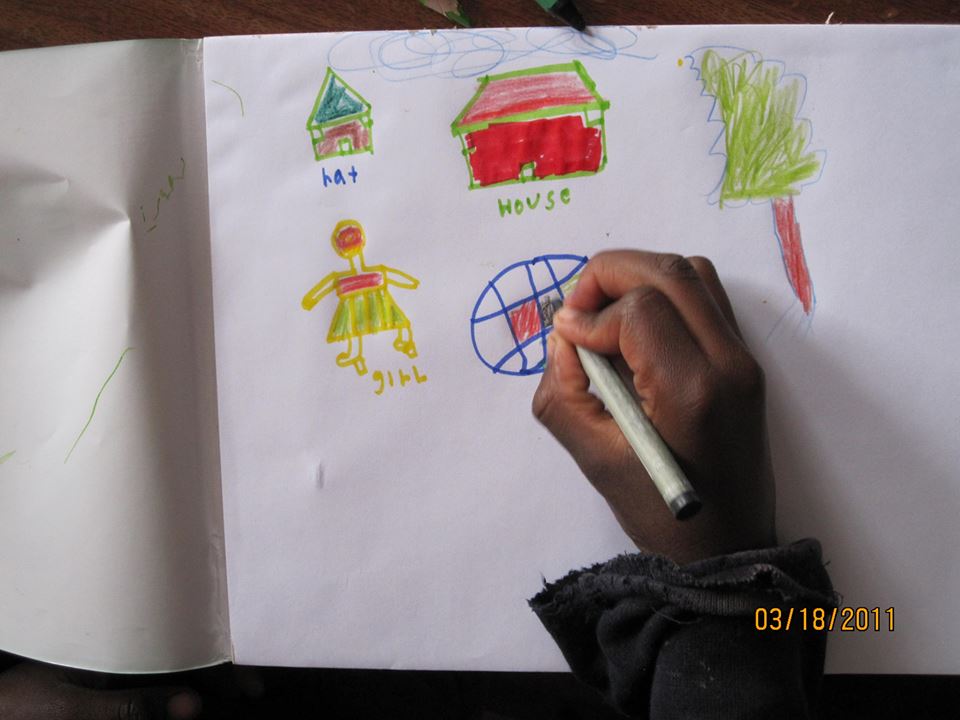
ACTIVITIES
- Promoting and nurturing artistic talent among children for environmental conservation.
- Helping women earn a living through making and selling traditional art and crafts.
- Development of the youth potential and nurture talent with a view of empowering them economically.
- Sensitizing young adults on the importance of local languages as a way of communication.
- Organizing workshops to provide a forum for Kenyans from all walks of life to learn from elders about the culture and traditions.
- Enabling visitors understand the local culture and integrate with the locals as well as share in their day-to-day activities.
THE RIFT VALLEY INITIATIVE
UPDATE, 2020: After 2 years of peace building in Kabarnet-Kenya, we are changing our approach in addressing the root cause of the insecurity (Inter-communal Conflict over Natural Resources) in an effort to achieve peace in the Baringo and the North Rift Valley region of Kenya.
The mix of political incitement, the fight for land and pasture, water, minerals and forests has created an endless war in the Northern Rift. The communities have been locked in conflict for close to 15 years now due to limited and varying natural resources.
The project proposes that a return to cultural past to mitigate the effects of climate change in Kenya can help to achieve peace in the Rift Valley.
John Tilji Menjo is the founding director of Eco-learning Cultural Center, a program in Kabarnet for helping kids in Kenya create art for conservation and tribal integration. The project proposes to establish an arts and cultural center in Kabarnet Township in Kenya to enhance the application of indigenous knowledge for cultural and biodiversity conservation for development of peace.
Before colonialism and globalisation, Kenyans lived in harmony with nature. Concerned about the climatic changes marked by reduced and unpredictable rainfall and the drying up of rivers, we have come together to look for solutions to save the planet Earth and its inhabitants. For the past seven years Eco-learning Cultural Center, a community based cultural nonprofit organisation comprising elders, the custodians of sacred sites, seed savers, herbalists, hunters, beekeepers, children and youths in the North Rift Valley region have been seeking ways to save their environment from depletion through cultural practices.
The elders led by John Tilji Menjo have been recounting to the young generation what their territory was like before the advent of colonialism, globalization and climate change, and how they lived in harmony with nature.
Last year we documented our past and knowledge using eco-cultural maps and calendars. Such maps were first developed by indigenous people in Colombian Amazon over 30 years ago, and serve as “talking tools” that help people understand how their territories and governance systems functioned in the past, and the cultural and ecological losses.
The maps also identify the present challenges and outline the vision for the future. They have therefore started drawing maps and calendars of their past showing where extinct forests, rivers and wildlife once existed. The ancestral calendar shows the circle of seasons in the Kenya Rift Valley in the past and reveals the changes in weather, constellations, ecosystems and human activities throughout the year. It shows a predictable, regular climatic circle, free from extreme weather, such as long dry spells and storms.
Having done this, we developed a shared picture of the present to enable them to develop a comparative analysis with the past, identifying and debating positive and negative changes that have taken place. They discussed the devastating intertwined erosion of culture and nature they have observed in the area since the colonial era and the neoliberal structural adjustment and globalization that followed independence. They raised concerns about the unpredictable climate in the region, which is affecting every aspect of life. Elephants, rhinos, lions, leopards, antelopes and some plant species have disappeared from the regions range lands.
The erosion of customary laws that once governed the cutting of trees and limited the number of trees that were cut down and what to hunt has resulted in the disappearance of some animal and tree species. Eco-learning Cultural Centre therefore should be empowered socially and financially to educate the community on implications of climate change while participating in actual peace building.
Letter of Intent
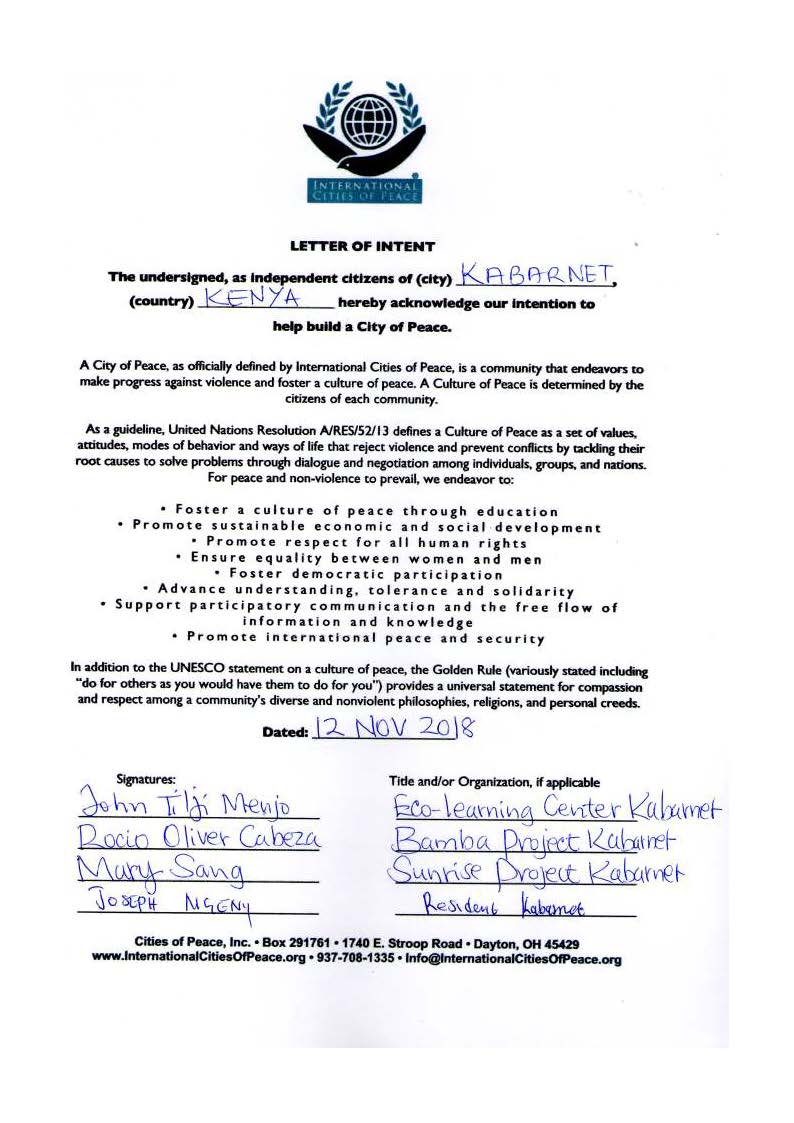
Cultural Diversity
Baringo is one of the few counties endowed with rich culture and traditions that are unique. The county with a population of more than 600,000 people hosts all Kenyan communities including the Tugen, Pokot, Ilchamus, Endorois, Agikuyu, Turkana and Nubians, making it a county of great diversity both socially and culturally.
The annual Baringo Cultural event draws different cultural groups and popular artists to display their rich culture through songs, poems and traditional attire,
The cultural groups consisting of both young and the elderly take their time to compose and perfect their presentations originated from seasons, peculiar community incidences, renowned personalities and icons, environment, cultural practices, norms and beliefs among many more.
Most of these communities particularly the Pokot, Ilchamus and Endorois still guard their culture jealously in order to preserve them, but we are the putting up spirited fight against retrogressive cultural practices especially early forced marriages, female genital mutilation, cattle rustling and banditry through peaceful cultural interaction between communities during the events where diverse communities embrace each other.
These efforts have seen the trend slowly reverse, and inspiration scenes of perceived rival communities singing and dancing to each others’ songs particularly among the Ilchamus and Pokot traditional groups have been witnessed.
These presentations aims at delivering moral lessons and messages on communities’ way of living, child naming ceremonies, greetings based on age blood relationships and age sets, rain making, rites of passage and artifacts and regalia used by the communities.
The project is cognizant of the fact that it is through appreciating different cultures that the diverse Kenyan communities can co-exist peacefully.
ABOUT THE LIAISON
John Tilji Menjo is a Kenyan social worker, writer, activist and culture promoter. In
the late 70’s, he went through the Palestinian refugee camps inside and outside of Palestine and asked Palestinian children to write letters to God. The letters from the children are shared in the book, ‘Tears From Palestinian Children to God’, authored in form of children’s letters and drawings; published in Washington DC by Palestine Foreign Information Office, PLO (1981).
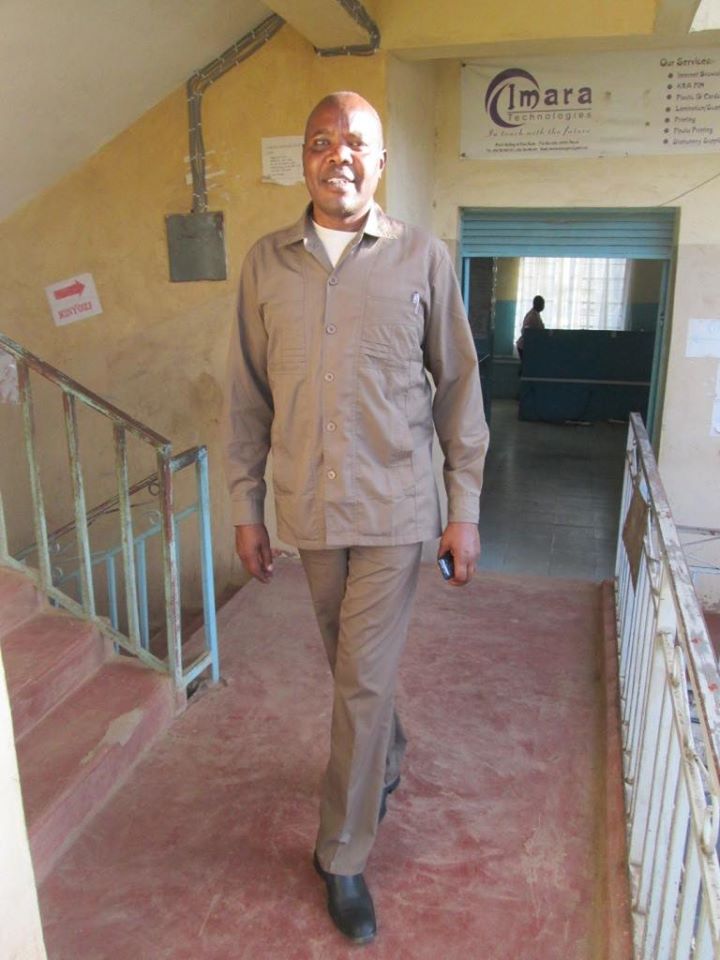
The book addresses the Arab-Israeli conflict, civil rights, Jewish-Arab relations and Palestinian Arabs. This, I think, gave birth to my eternal passion to offer opportunities
for creative art as a form of therapy and entertainment for underprivilaged Kenyan children in conflict and post-conflict situations.
John studied in India (Bhopal University and Goa University), where he had a good general education studying Sociology, Political Science, Literature in English, Indian Cultural Heritage, and obtained the degree of Bachelor of Arts, English concentration.
“I will use the events to encourage youth in the region that have been engaging in cattle rustling and other forms of criminal activities to shun them.
“The activities will include singing, dancing, Art and crafts and showcasing elements of the Baringo culture.
“An Art and Cultural Center would be built in the area to promote and preserve the region’s cultural heritage at risk. The Center would also serve as a tourist hub and a center for cross-border peace activities in the region. This is a way of bringing together the communities especially the youth who are the ones who take part in the fighting.
“This initiative will help engage our children, youth and the elderly in peaceful productive activities.”
CONTACT INFORMATION
ABOUT KABARNET, KENYA (from Wikipedia)
Kabarnet is a town in the northern Rift Valley region of Kenya close to Lake Baringo, about 270 kilometers north-west of Nairobi along the slopes of the Tugen Hills. It is the headquarters of Baringo County since 1907 as the British Colonial government made it the seat of the local government. It became Municipality in 1984. It has a coat of arms since 1993.
Kabarnet is the hometown of Kenya’s second president, Daniel Arap Moi.
The location is named after a missionary from Australia, Albert Edmund Barnett, who was member of the Africa Inland Mission and came first to central Kenya in 1908. ‘Ka’ is homestead in the Kalenjin language. The name thus means Barnett’s home.
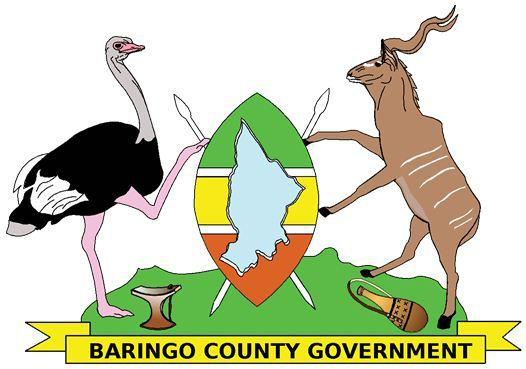
The Baringo Community
The name Baringo is derived from the word ‘mparingo’ which means ‘lake’ in the language of Ilchamus (also known as the Njemps) who live in the areas south and south-east of the lake. It is one of the largest counties in Kenya.
The dominant ethnic groups in Baringo are the Pokot, Tugen, Endorois and Ilchamus. Pokot and Tugen are linguistically related groups of the larger Kalenjin tribe. These communities mainly keep livestock, although the people living in highlands usually practice subsistence farming.
Livestock especially cattle and goats are an important feature of the Baringo culture. It is a major source of wealth and serves as a form of currency used to negotiate for wives and dowry payment. As such it is common for Pokot boys of school-going age to be used to raid their neighboring communities – especially Turkana and Tugen – to enlarge their herds.
Note: If information or photos used here are copyrighted, please contact us and we will immediately delete the copyrighted material.
